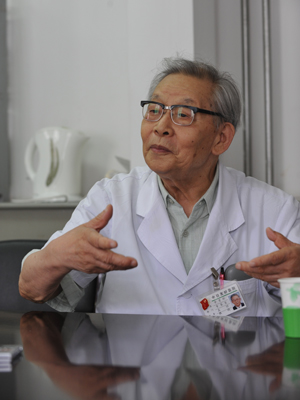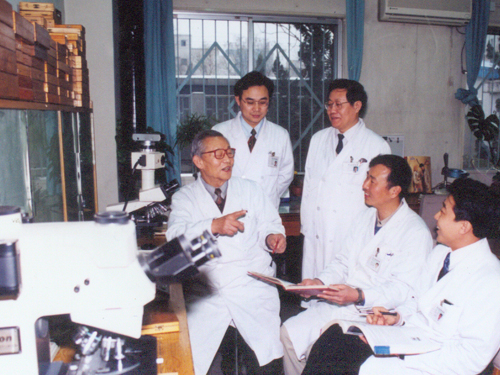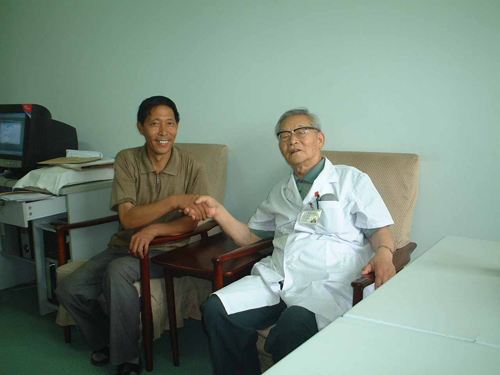

Xin Yuling, born in 1921, is famous for his pioneering and creative contributions to China’s thoracic surgery and electrochemical therapy.
 |
| Xin Yuling [Photos/bjby.bjwmb.gov.cn] |
Xin Yuling worked as a medic at the frontline during the War of Resistance against Japanese Aggression and helped save the lives of thousands. In 1939, he worked with the well-known Canadian doctor, Norman Bethune, who devoted his life to saving Chinese soldiers' lives during the war.
After graduating from China Medical University in Yan’an, North China’s Shaanxi province, in 1947, he provided medical services for soldiers during the War of Liberation and the 1950-53 Korean War.
As one of the first surgeons to study in the former Soviet Union under a government scholarship, Xin Yuling received his doctoral degree in medicine in the Soviet Academy of Science in 1956.
Upon his return to China, Xin Yuling helped found China’s first thoracic surgery research center in Beijing. He has been at the forefront of the subject for decades.
Xin applied bicaval cannulation anesthesia and bronchial stump mucosa externa sutures in lung resection operations for the first time. He treated over 5,000 lung disease sufferers, bringing the incidences of stump fistula, a serious complication of lung resection, down to 0.4 percent.
In order to promote thoracic surgery technology nationwide, he began to hold a one-year course every year for thoracic surgeons with the support of the Ministry of Health, training over 300 thoracic surgeons from 1958 and 1980. With his help, the thoracic surgery department was established in 40 hospitals across China.
He was also committed to work in traditional Chinese medicine and pioneered acupuncture anesthesia in thoracic surgery. He first proposed and applied acupuncture anesthesia in thoracic surgery by stimulating an acupoint, "sanyang point", to ease pain.
As one of the founders of the China-Japan Friendship Hospital, Xin Yuling resigned his post as the director of the hospital in 1985 and became involved in medical innovation.
 |
|
Xin Yuling gives a lecture for his PhD students in 1989. |
Xin Yuling then worked in electrochemical therapy, which was based on the local application of a continuous current that transiently permeabilizes the cell membrane, and reached clinical use in treatment of tumors.
To date, 152 related training programs for more than 2,800 doctors have been held, with nearly 11,800 tumor sufferers treated with a 65-85 percent recovery rate. Electrochemical therapy has become "the sixth tumor therapy" next to surgery, chemotherapy, radiotherapy, immunotherapy and Chinese medical therapy.
 |
| Xin Yuling and his patient |
For him, the "patient is the source of learning. We should serve the patient and learn from the service." He, even in his 80s, still receives outpatients every week and attends ward rounds.